Ossett Churches and Chapels
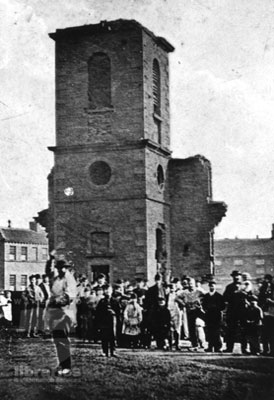
The Old Parish Church
Until the middle of the nineteenth century Ossett was part of the parish of Dewsbury. It did, however, have its own chapel in the Market Place cared for by a curate. It was thanks to the energy of one curate, the Reverend Kilvington, that the chapel was rebuilt in 1807. By the time North Ossett became a parish independent of Dewsbury in 1858, Kilvington’s chapel was looking old fashioned, the ‘Wakefield Express’ describing it as ‘a very bad specimen of the Italian style’. As a result, funds were raised for a new church and the old church was demolished in 1866.

Ossett Parish Church
The architectural historian Nikolaus Pevsner included only one Ossett building in his survey of the West Riding – Holy Trinity church. It was designed in the Gothic style by the Huddersfield architect, W. H. Crossland. When the foundation stone was laid in 1862, the estimated cost of the church was £8,000. Much of the money was donated by Benjamin Ingham, a member of an Ossett family which had made a fortune in the wine trade in Sicily. Dedicated in 1865 by the Bishop of Ripon, the church’s spire still dominates the skyline of the town.
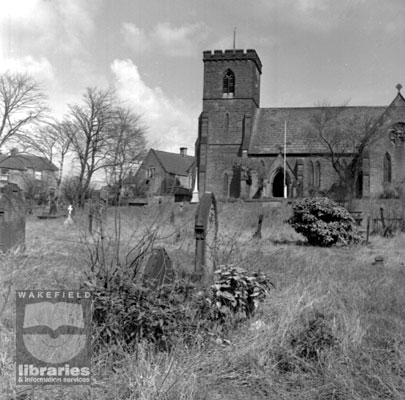
South Ossett Parish Church
South Ossett became independent of the parish of Dewsbury in 1848 and its new parish church, Christ Church, was consecrated by the Bishop of Ripon in 1851. Considered ‘one of the most beautiful country churches in the neighbourhood’, it was designed in the Gothic style by the Bradford architects Mallinson and Healey. The Reverend D.C. Neary, the first vicar, soon quarrelled with some of his parishioners. When he tried to collect church rates, allegedly breaking a promise not to do so, he was ‘mercilessly plied with large placards and fly-sheets’, while Nonconformists and Anglicans jostled each other on the way to Sunday worship.
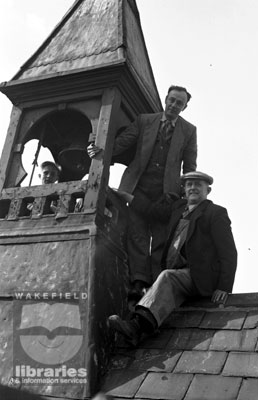
Bell Tower St Aidan’s Mission Church
The growth of population in south-eastern Ossett at the end of the nineteenth century, partly the result of the expansion of Roundwood Colliery, led to the building of St Aidan’s Mission Church. Architect A.S. Marriott selected the Tudor style for this ‘substantial little structure’ which when it was consecrated in 1900 by the Bishop of Wakefield was intended to serve both as a church and a day school. The school did not prove a success, closing down in 1905, perhaps because of competition from the nearby Spa Street school.
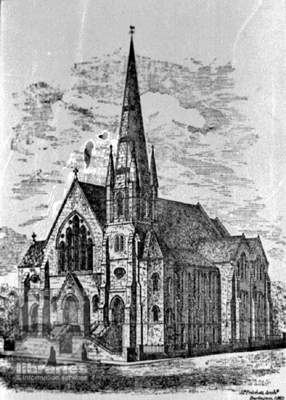
The Congregational Church, The Green
By the end of the nineteenth century the Congregationalists, the oldest of Ossett’s Nonconformist denominations, had three churches in the town – the Green, Flushdyke and High Street, Gawthorpe. Of these churches the most imposing was at the Green. Opened in 1883, it was the third place of worship since 1731 on the site. Its architect, J.P. Pritchett of Darlington, used the Gothic style for the new church. Earlier generations of Congregationalists might not have approved. As one Congregationalist said: ‘Now in Ossett they have got a Congregational church, but at one time had they styled their sanctuary a church and a spire upon it … a shudder would have run through many of their brethren.’ The cost of the new church was £6,000, £4,000 of which had been raised by the time it opened.
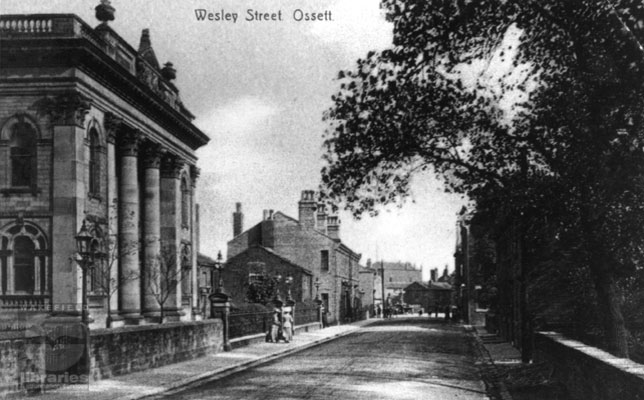
Wesleyan Methodist Chapel, Wesley Street
Called ‘the Wesleyan cathedral’ by Alderman G.H. Wilson in 1894, the Methodist chapel in Wesley Street was the grandest of the Nonconformist chapels in Ossett. It was the third chapel on the site, its predecessor having become too small for the town’s growing population. The architects, Bulmer and Holtom of Wakefield and Dewsbury, used the ‘modern Italian style’ to design a façade dominated by two Corinthian columns. Opened in 1868 at a cost of £5,000, the chapel could accommodate 1,300 worshippers. Among those who rented pews was William Gartside, who live opposite the chapel in Wesley House, and Edward Clay, the founder of the firm that still bears his name.
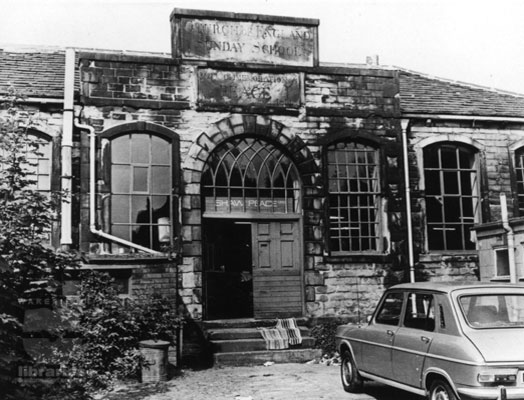
Shaw Peace Limited, Ossett
‘In Commemoration of Peace 1814’ reads the inscription above the door of Shaw Peace’s now demolished printing works. Erected when Napoleon had been exiled to Elba, the building originally housed a Sunday and day school founded by the Reverend Edward Kilvington, curate of Ossett. Divided into boys’ and girls’ sections by a wooden partition, the school was supervised by Kilvington from a desk overlooking both parts. Soon after it was opened the school was visited by Dr Whitaker. Impressed by the results, he wrote that ‘in no instance perhaps, have parochial and Sunday schools been brought to greater perfection under the eye of their minister than in this populous village’. By 1875, however, the building was no longer provided suitable premises for a day school and it was transferred to new buildings in Church Street. Although the old building has been demolished, the stone plaque survives embedded in the boundary wall of the Kingsway Christian Centre.
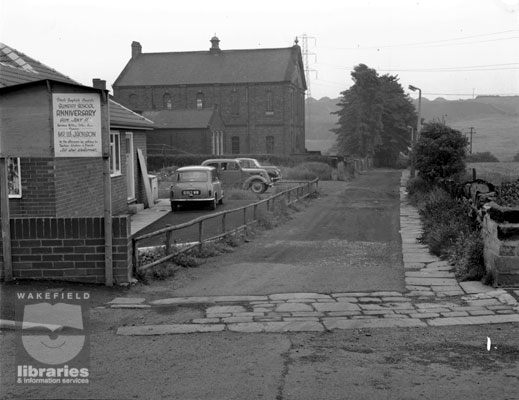
Baptist Chapel, Baptist Lane, South Ossett
The brick built Baptist chapel was opened in 1868, but the Baptists had worshipped on the site since 1819 in a converted barn. Missionaries from the Baptist Itinerant Society, finding a lukewarm reception in Horbury, had been invited to Ossett Common to preach, at first in a cottage and then in the barn. Costing £1,200, the chapel was designed by T. Horsfield of Halifax. Although the Baptist church was a small one – in 1868 there were 29 members – it opened new Sunday school premises in 1894. These soon afterwards became the home of a nondenominational day school which then became a council school. Now the chapel and school have been demolished and the chapel’s graveyard has been levelled.
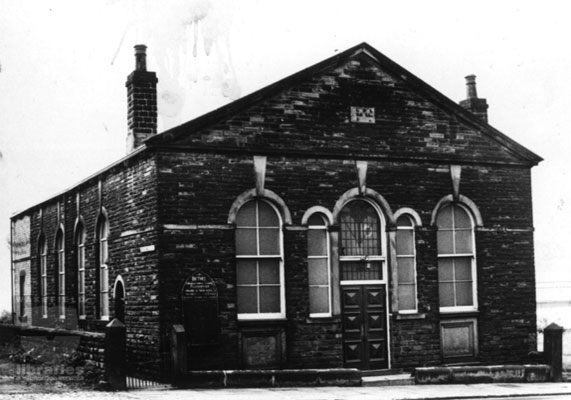
Bethel Chapel, Flushdyke
When the foundation stone of the Congregational chapel at Flushdyke was laid in 1863 the ‘Wakefield Express’ commented that it would be ‘a plain, but at the same time handsome and commodious structure, in the Italian style of architecture.’ The chapel’s architects were the Dewsbury firm of J. Marriott and sons, while its cost was £500. Congregationalists had been active at Flushdyke for at least ten years before work on the chapel began. One of the leaders of the movement there was Helen Haigh, a member of the Ebenezer Chapel in Dewsbury who moved to Flushdyke to work in Thomas Tolson’s carpet mill. She helped to organise a Sunday school at Flushdyke and by 1858 there was sufficient interest for a chapel building committee to be formed.
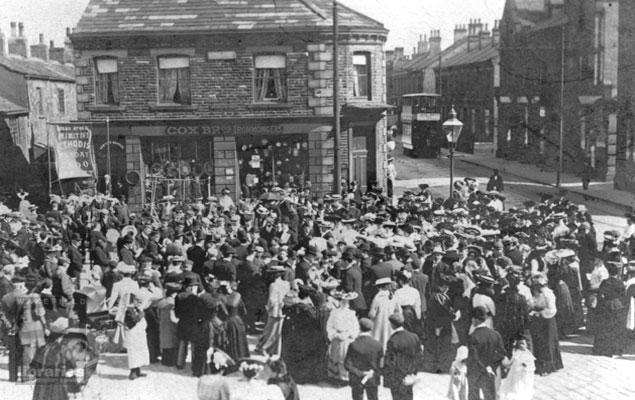
Primitive Methodist Sunday School
Sunday schools were a feature of the life of most churches and chapels in the nineteenth and early twentieth centuries. Before schooling became compulsory in 1876, they often taught reading and writing as well as religious education. Large numbers of children attended Ossett’s Sunday schools: in 1873 the Congregationalists had 700 students and 70 teachers. Not all children enjoyed the experience, not least because they had the discomfort of wearing their best clothes. There were, however, compensations such as the annual Sunday school feast. This typically included a procession through the streets of Ossett, hymn singing and then a tea followed by games.

